
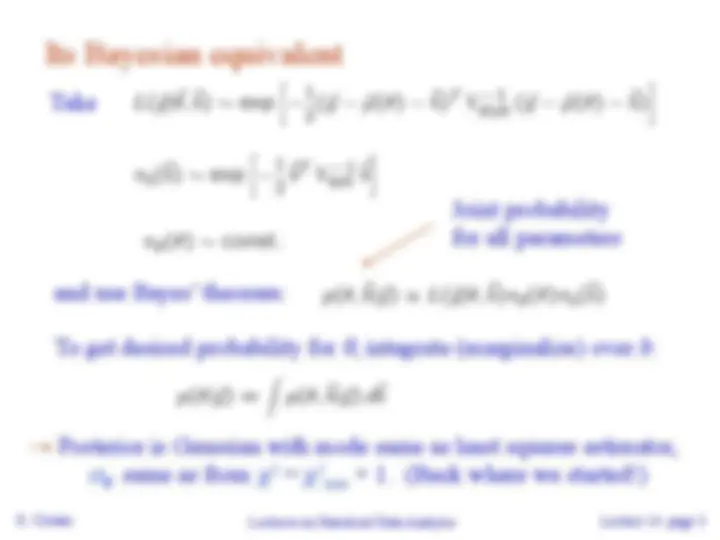
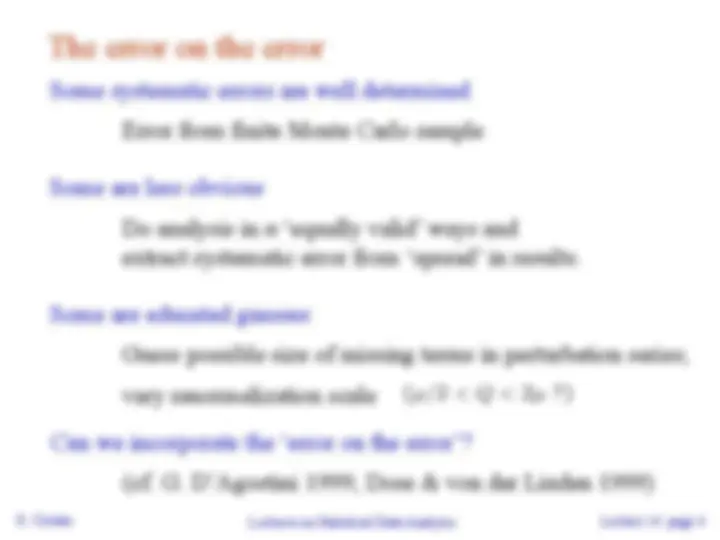
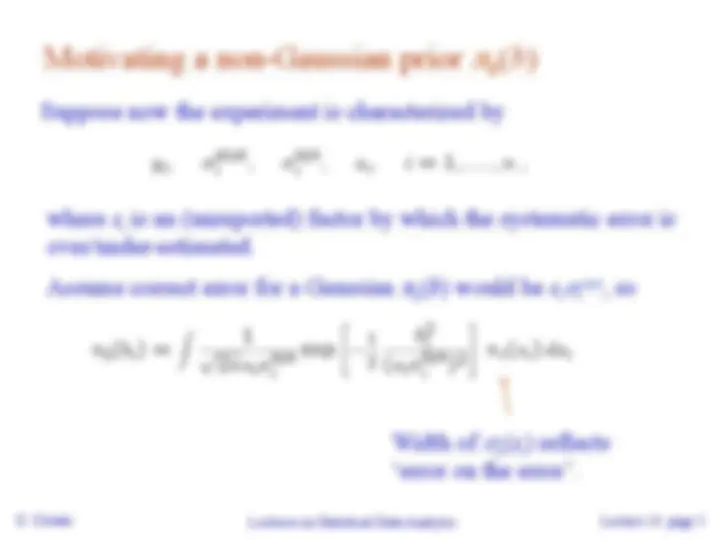
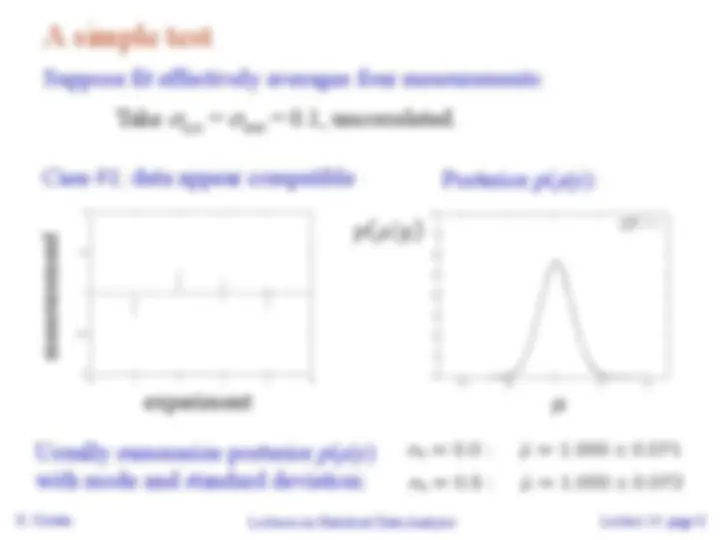
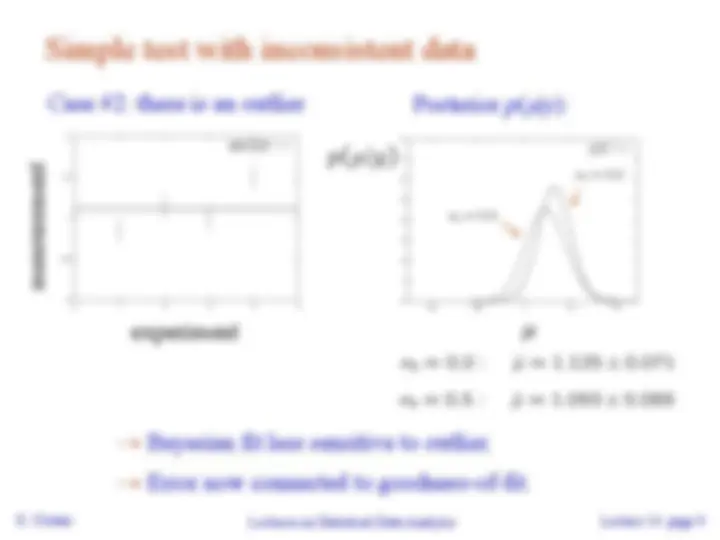
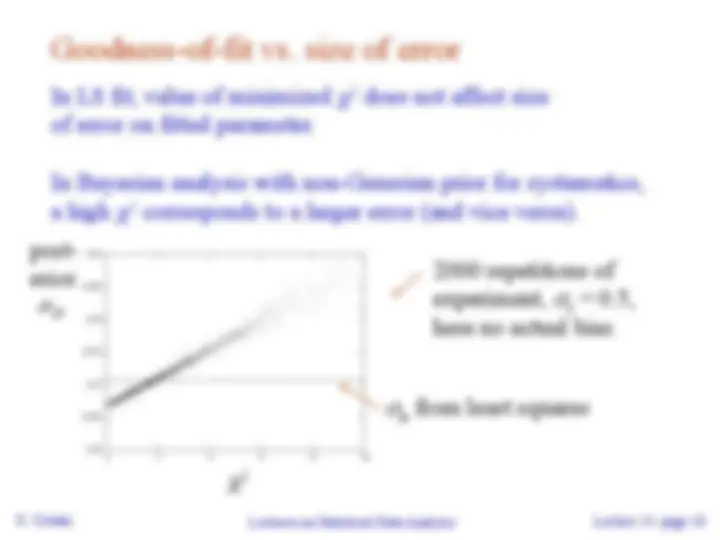
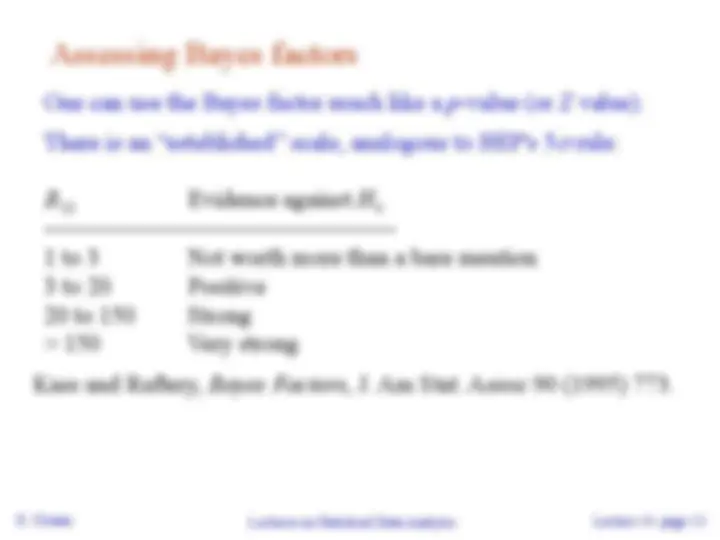
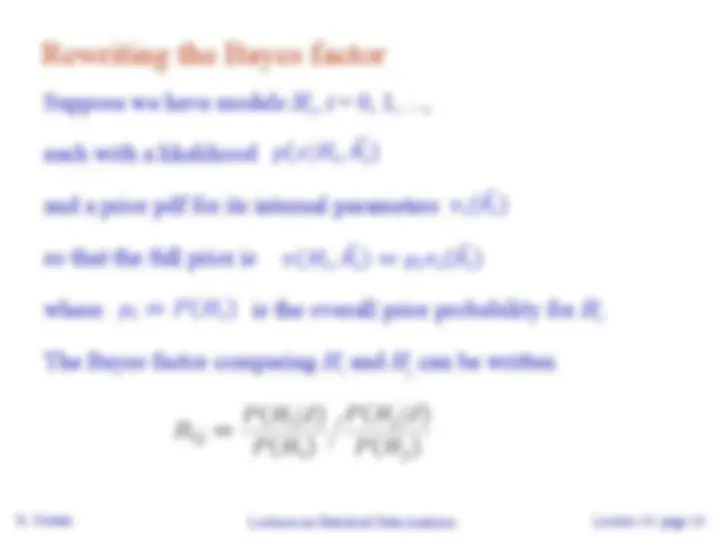
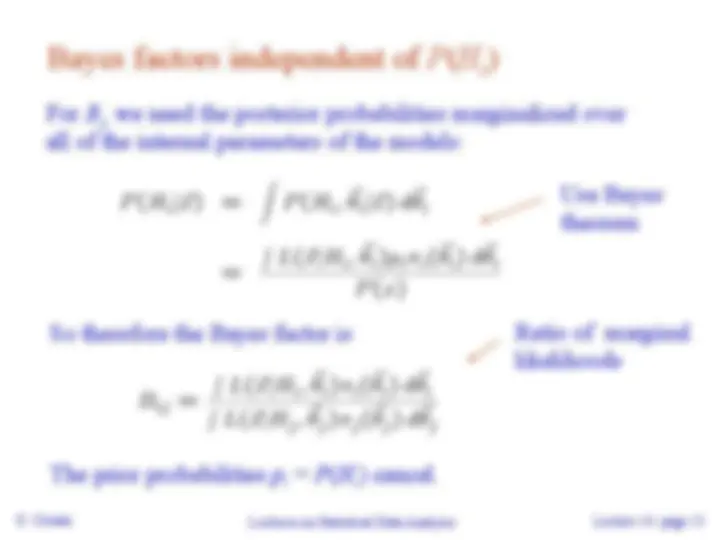
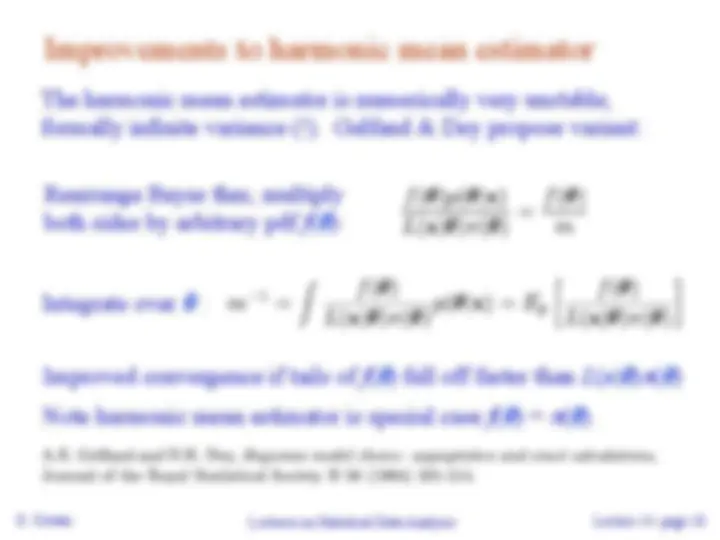
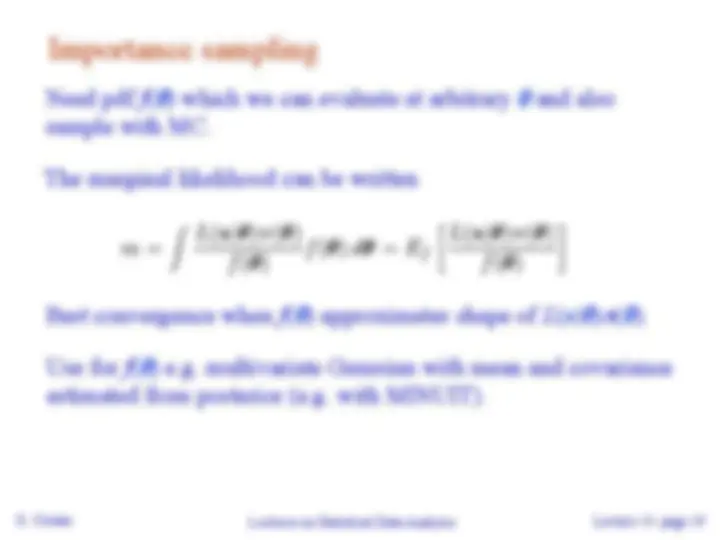
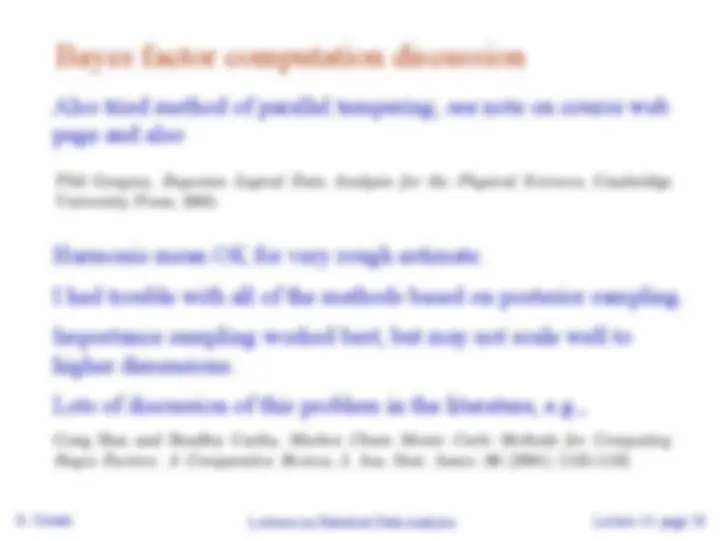



Study with the several resources on Docsity

Earn points by helping other students or get them with a premium plan


Prepare for your exams
Study with the several resources on Docsity

Earn points to download
Earn points by helping other students or get them with a premium plan
Community
Ask the community for help and clear up your study doubts
Discover the best universities in your country according to Docsity users
Free resources
Download our free guides on studying techniques, anxiety management strategies, and thesis advice from Docsity tutors
A part of lecture 14 from g. Cowan's 'lectures on statistical data analysis.' it covers topics such as probability, bayes' theorem, random variables, expectation values, error propagation, the monte carlo method, statistical tests, and the bayesian approach. The lecturer discusses the concept of a typical fitting problem, the use of bayes' theorem for integrating over bias, and the importance of considering the 'error on the error.' the document also introduces the gamma distribution as a model for the error-on-error function and discusses the implications of using non-gaussian priors for bias.
Typology: Slides
1 / 21

This page cannot be seen from the preview
Don't miss anything!














1 Probability, Bayes’ theorem 2 Random variables and probability densities 3 Expectation values, error propagation 4 Catalogue of pdfs 5 The Monte Carlo method 6 Statistical tests: general concepts 7 Test statistics, multivariate methods 8 Goodness-of-fit tests 9 Parameter estimation, maximum likelihood 10 More maximum likelihood 11 Method of least squares 12 Interval estimation, setting limits 13 Nuisance parameters, systematic uncertainties 14 Examples of Bayesian approach
Given measurements: and (usually) covariances: Predicted value: control variable parameters bias Often take: Minimize
χ 2 / , i.e., least squares same as maximum likelihood using a Gaussian likelihood function. expectation value
Some systematic errors are well determined Error from finite Monte Carlo sample Some are less obvious Do analysis in n ‘equally valid’ ways and extract systematic error from ‘spread’ in results. Some are educated guesses Guess possible size of missing terms in perturbation series; vary renormalization scale Can we incorporate the ‘error on the error’? (cf. G. D’Agostini 1999; Dose & von der Linden 1999)
b
Suppose now the experiment is characterized by where s i is an (unreported) factor by which the systematic error is over/under-estimated.
b ( b ) would be s i
i sys , so
s ( s i ) reflects ‘error on the error’.
b
Gaussian ( σ s
sys
σ s
sys
b
Suppose fit effectively averages four measurements.
sys
stat = 0.1, uncorrelated.
Usually summarize posterior p ( μ | y ) with mode and standard deviation: experiment measurement
2 does not affect size of error on fitted parameter. In Bayesian analysis with non-Gaussian prior for systematics,
2 corresponds to a larger error (and vice versa). 2000 repetitions of
s
here no actual bias.
2
μ from least squares post- erior
Should to generalize to include correlations
Can separate out different systematic for same measurement
s , others larger. Remember the “if-then” nature of a Bayesian result: We can (should) vary priors and see what effect this has on the conclusions.
One can use the Bayes factor much like a p -value (or Z value).
10 Evidence against H 0
1 to 3 Not worth more than a bare mention 3 to 20 Positive 20 to 150 Strong
150 Very strong Kass and Raftery, Bayes Factors , J. Am Stat. Assoc 90 (1995) 773.
Suppose we have models H i , i = 0, 1, ..., each with a likelihood and a prior pdf for its internal parameters so that the full prior is where is the overall prior probability for H i
The Bayes factor comparing H i and H j can be written
Both numerator and denominator of B ij are of the form ‘marginal likelihood’ Various ways to compute these, e.g., using sampling of the posterior pdf (which we can do with MCMC). Harmonic Mean (and improvements) Importance sampling Parallel tempering (~thermodynamic integration) ... See e.g.
E.g., consider only one model and write Bayes theorem as:
with one over the average of 1/ L (the harmonic mean of L ). posterior expectation
sample with MC. The marginal likelihood can be written
estimated from posterior (e.g. with MINUIT).
Also tried method of parallel tempering; see note on course web page and also Harmonic mean OK for very rough estimate. I had trouble with all of the methods based on posterior sampling. Importance sampling worked best, but may not scale well to higher dimensions. Lots of discussion of this problem in the literature, e.g.,